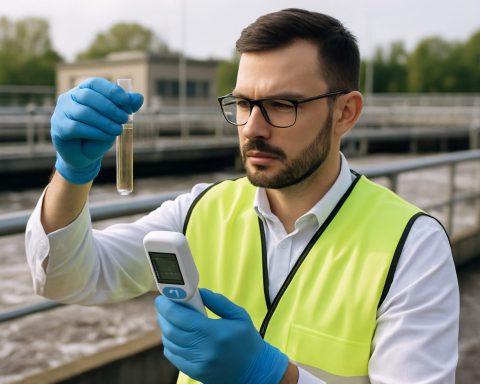This Shimmering Platinum Violin Is Smaller Than a Speck of Dust—But It’s Set to Change Tech Forever
Loughborough University scientists craft a record-breaking microscopic violin, launching nanolithography into the spotlight for 2025.
- Violin Size: 35 x 13 microns – thinner than human hair
- Material: Platinum, engraved with a NanoFrazor sculpting machine
- Purpose: To showcase advanced nanolithography technology
- Potential Impact: Breakthroughs in microchips and energy tech
Picture this: A violin so tiny you’d need a microscope just to spot it. That’s exactly what researchers at Loughborough University have created—an ultra-detailed, platinum violin measuring only 35 microns long and 13 microns wide. For scale, that’s slimmer than the narrowest human hair or even most microscopic tardigrades (those famous “water bears”).
But if you’re dreaming of playing violin concertos for an army of micro-creatures, here’s the twist: This instrument is unplayable! Instead, this marvelous miniature was made to capture global attention—and to demonstrate the jaw-dropping precision of the university’s nanolithography system.
Loughborough University physicists engineered the sparkling violin in 2025 to launch their cutting-edge technology into the limelight. Their new setup enables scientists to sculpt and study structures at a scale 1,000 times tinier than a human hair: the nanoscale. The violin was engraved on a microchip with a state-of-the-art tool called the NanoFrazor. Think of it as a microscopic chisel, heated to carve platinum lines finer than dust particles.
But why build a toy-sized violin that can’t play a tune?
Why Would Scientists Make the World’s Smallest Violin?
It’s all about showing—not just telling—the public how incredibly tiny nanolithography can go. Until now, tech talk about “nanoscale” innovation felt wildly abstract. By etching a world-famous shape as small as a flea, the Loughborough team turned science fiction into a tangible reality.
They used a platinum layer, only a handful of atoms thick, “written” with a needle barely sharper than a virus. With the help of a powerful Keyence VHX-7000N Digital Microscope, the violin’s intricate details came into focus, capturing imaginations worldwide.
How Does Nanolithography Work?
Nanolithography is the process of creating patterns at the atomic or molecular scale. Loughborough’s NanoFrazor system, one of the most advanced on the planet, leverages a heated probe to scribe and shape minuscule structures with unprecedented precision.
This enables quantum leaps in designing—and probing—the properties of future materials. The possibilities? Ultra-fast, ultra-efficient microchips, next-gen data storage, even novel ways to harvest and conserve energy as our world devours more information than ever.
For more on the physics and engineering behind these advances, explore Nature or MIT Technology Review.
Q&A: What Are the Real-World Benefits?
Q: Does the platinum violin serve a scientific purpose?
A: Indirectly. Its creation proved the power and flexibility of the nanolithography system, which is poised to accelerate discoveries in computing and sustainable tech.
Q: Could this technology shape your future gadgets?
A: Absolutely! Think longer battery life, faster processing speeds, or even sensors small enough to fit inside a single cell.
Q: Can we expect even tinier marvels next year?
A: With the pace of nanotech innovation, scientists believe new records (and possibly even smaller violins) are just around the corner.
How-To: Spot the World’s Smallest Violin
1. Forget looking with your eyes—it’s almost invisible without scientific equipment.
2. A digital microscope at high magnification reveals the tiny work of art etched on a microchip.
3. Images spread across university publications and science news sites, making it accessible to curious minds everywhere.
What’s Next for Nanolithography?
This record-setting violin is only the beginning. In 2025 and beyond, expect nanolithography to change the way we design chips, sensors, and energy harvesters. Loughborough’s team invites researchers worldwide to push the boundaries of what’s possible with their new platform.
Get inspired by science! Here’s your action checklist:
- Follow breakthroughs in nanotechnology on trusted sources like Science or BBC Science.
- Stay curious about how microscopic engineering is shaping the future of electronics and energy.
- Share this story with friends—because sometimes, the smallest things change everything!
”
Be on the lookout for more tiny wonders from the lab—and keep your curiosity at maximum zoom!











